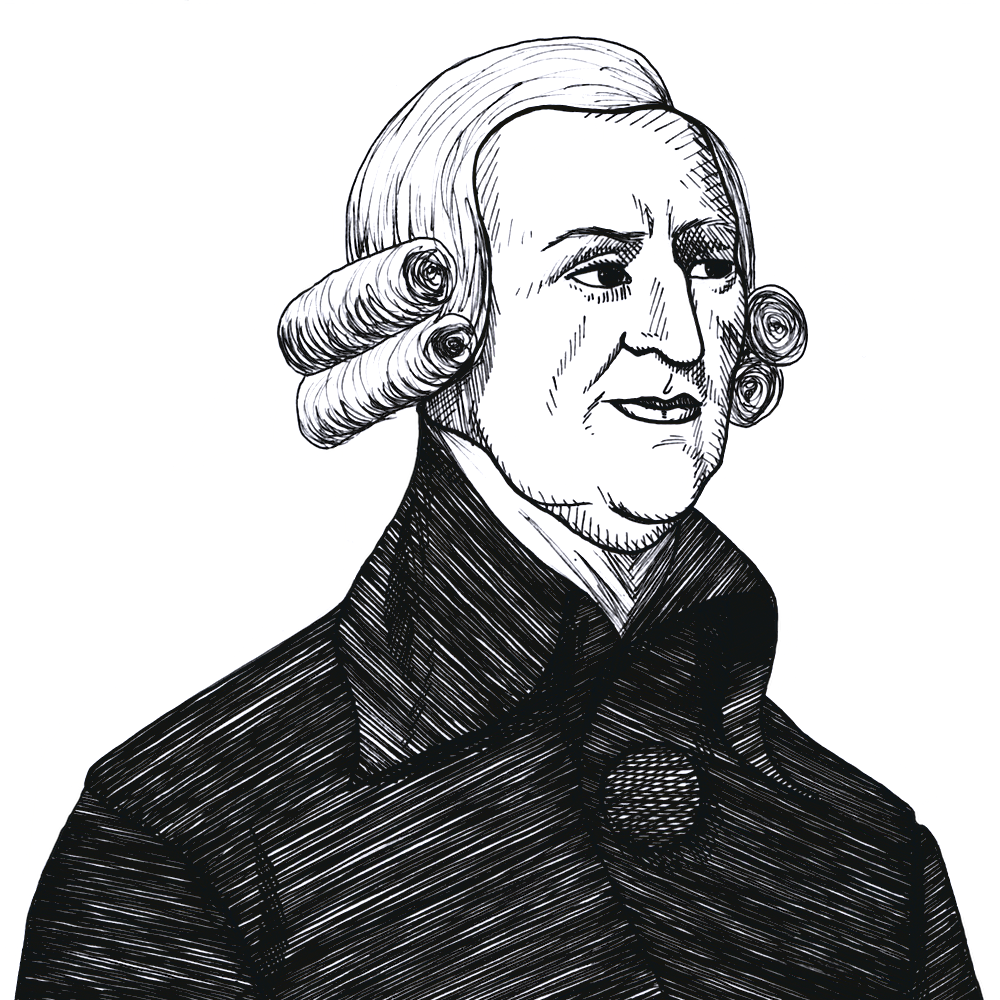
Adam Smith on the greater productivity brought about by the division of labor and technological innovation (1760s)
Found in: An Inquiry Into the Nature and Causes of the Wealth of Nations (Cannan ed.), vol. 1
In an early draft of the Wealth of Nations (1776) which Adam Smith wrote in the 1760s he discusses the very great increases in productivity brought about by incremental improvements in technology such as the plough and the corn mill, often brought about by the users of the machines who stood to benefit from them:
Economics
Every body must be sensible how much labour is abridged and facilitated by the application of proper machinery. By means of the plough two men, with the assistance of three horses, will cultivate more ground than twenty could do with the spade. A miller and his servant, with a wind or water mill, will at their ease grind more corn than eight men could do, with the severest labour, by hand mills. To grind corn in a hand mill was the severest work to which the antients commonly applied their slaves, and to which they seldome condemned them unlessl when they had been guilty of some very great fault. A hand mill, however, is a very ingenuous machine which greatly facilitates labour, and by which a great deal of more work can be performed than when the corn is either to be beat in a mortar, or with the bare hand, unassisted by any machinery, to be rubbed into pouder between two hard stones, as is the practice not only of all barbarous nations but of some remote provinces in this country. It was the division of labour which probably gave occasion to the invention of the greater part of those machines, by which labour is so much facilitated and abridged. When the whole force of the mind is directed to one particular object, as in consequence of the division of labour it must be, the mind is more likely to discover the easiest methods of attaining that object than when its attention is dissipated among a great variety of things. He was probably a farmer who first invented the original, rude form of the plough. The improvements which were afterwards made upon it might be owing sometimes to the ingenuity of the plow wright when that business had become a particular occupation, and sometimes to that of the farmer.